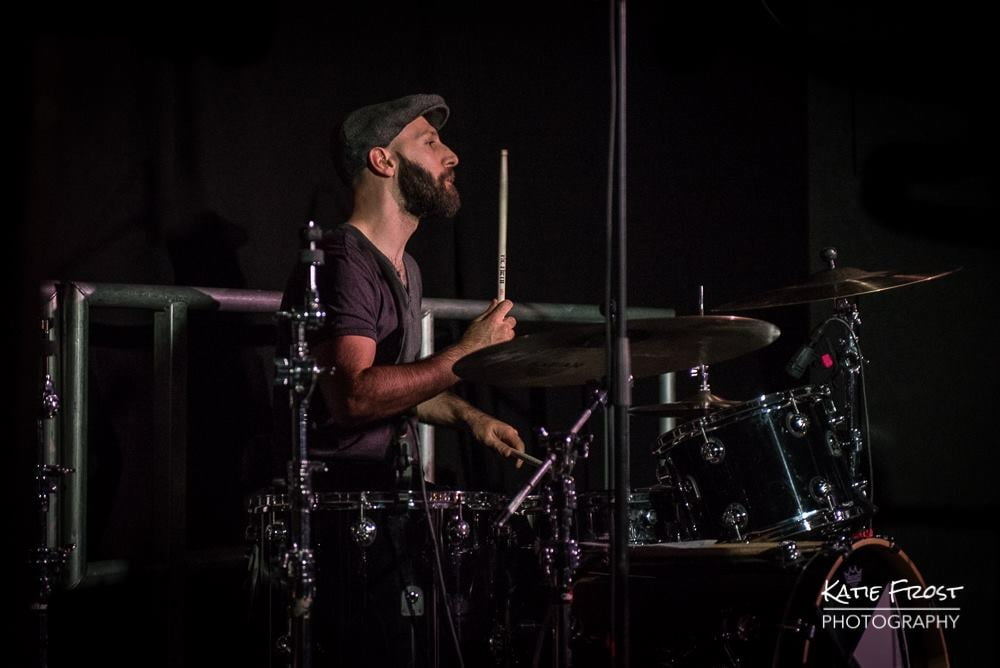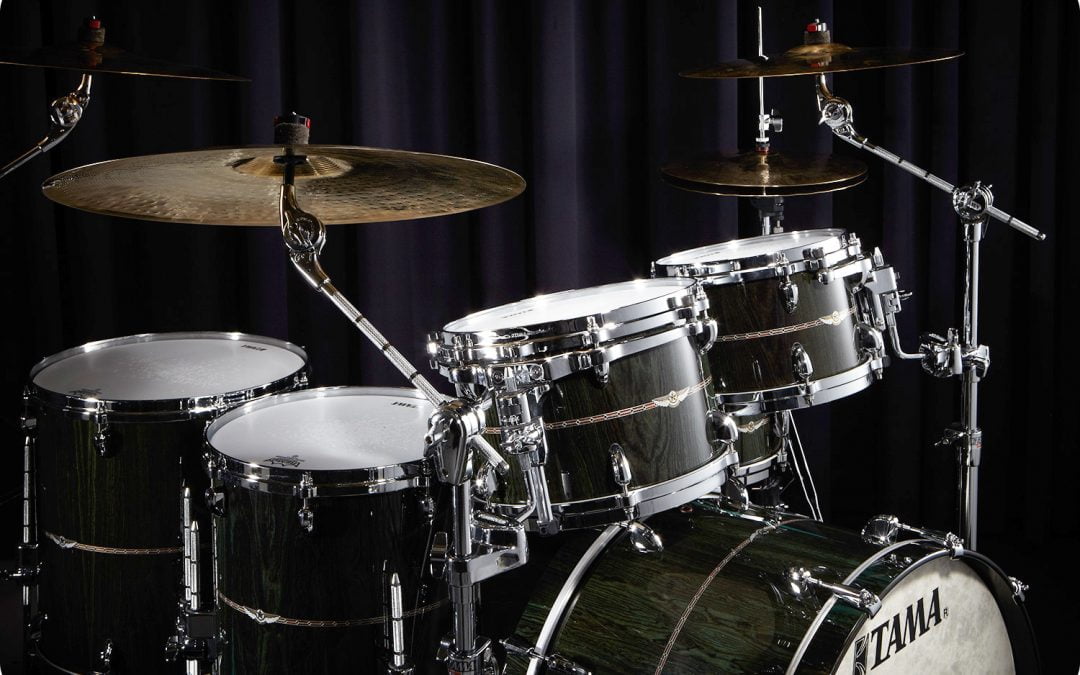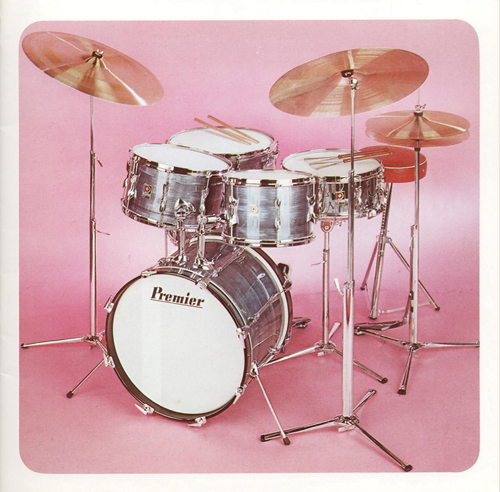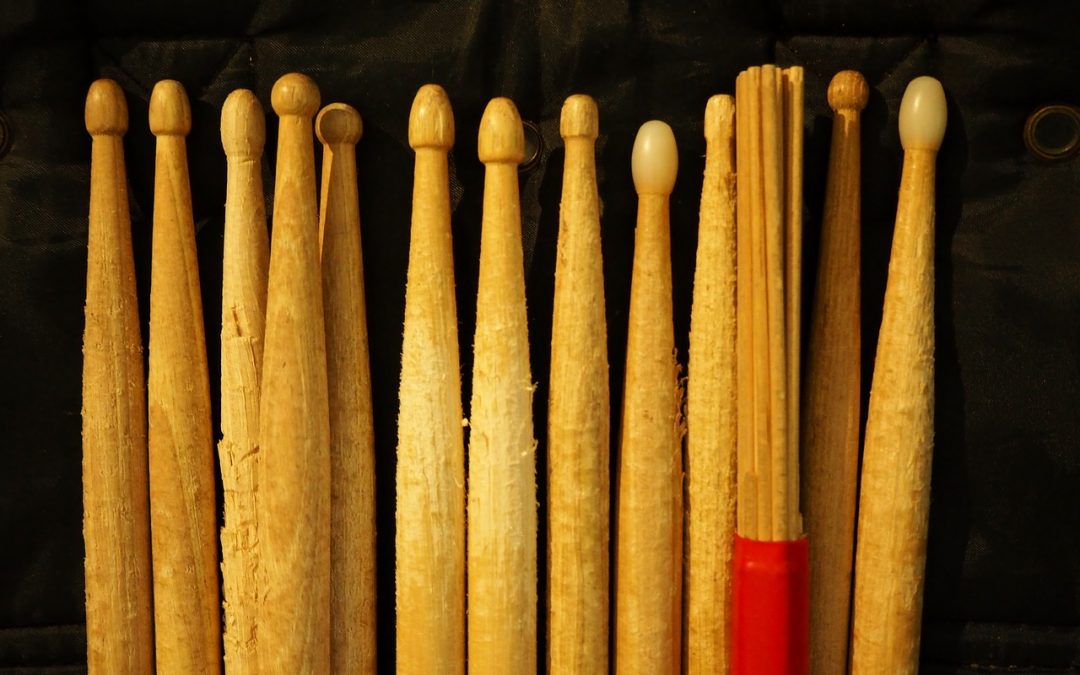
A Guide To Choosing Drum Stick Sizes Online
So you’re looking for advice into choosing drum stick sizes in a post-retail world! I hope the following article will help you in choosing the best drum sticks for you without being able to try them.
You may have noticed, we’re currently living in uncertain times. Coronavirus has impacted all of our lives, and lockdowns have become common place. The latter, it seems, have been on and off and then back on, with differing levels of restrictions. This, unfortunately, has meant that many music shops have either shut down temporarily (and some operating online), or closed down for good, such a the sad closure of Bell Music.

The pandemic has affected musicians and music retailers alike
Yet all is not lost as online retailers are able deliver the gear we’re after! And whilst there’s a plenty of information about drums, cymbals and how they sound (e.g. via YouTube), or even drum books (like mine, which you can buy directly from me here), it’s more difficult to convey tactile information such as drum stick sizes and how they feel in our hands.
So, what’s the best way to choose drum stick sizes and models online, without trying them? How do we choose a pair of sticks that we’ve been curious to try without actually feeling them in your hands? It all boils down to sorting, in my opinion. Below are my thoughts on this that I hope are useful in your decision-making process!
A general guide
I thought it would be useful to offer a quick, general guide to drum stick sizes / models and they’re applications with some notes:
- 7A: light, and thin. Great for jazz, or softer situations. Suitable for younger beginners too
- 8D: similar to the 7A, but slightly longer
- 1A: the longest stick. It can help provide that extra reach needed
- 5A: this is the standard drum stick. A great all-rounder
- 3A: longer and thicker than 5A
- 5B: thicker than the 3A, but slightly shorter. Great for louder volumes and heavy music
- 2B: this is the thickest drum stick; great for heavy music, or getting a thick tone out of the drums without too much energy
Keep in mind that pairs of drum sticks in the same model may, by nature of being made of wood, weigh differently! Companies try to always match pairs of sticks according to their weight and tone, so you’ll get an even pair! However, if you’re after next level consistency, synthetic material drum sticks such as ones made by Ahead can be a great option!
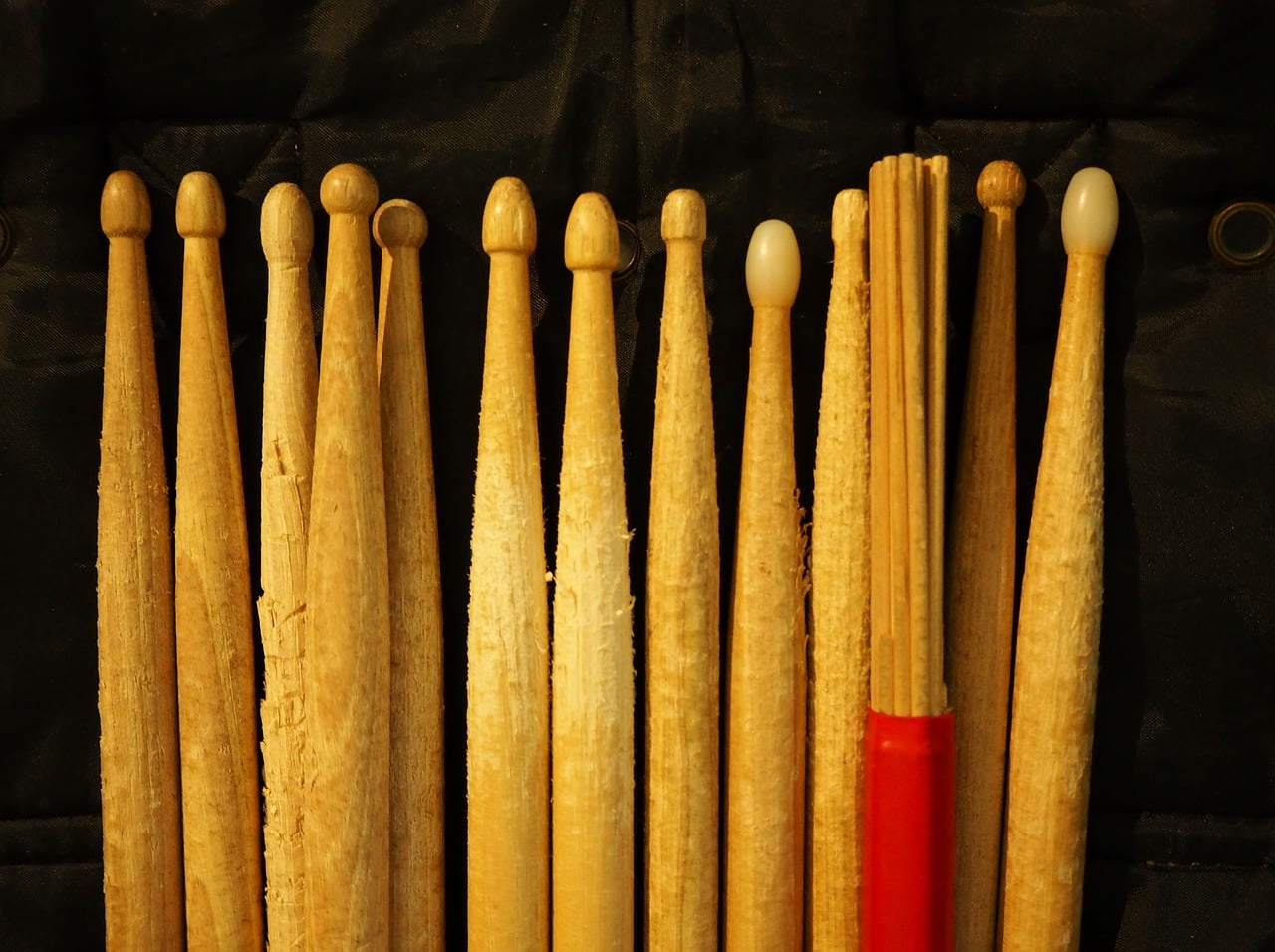
Drum sticks come in lots of different sizes, weights, material… But how do we choose them when we can’t try them?
Functionality
What genre or style do you want the sticks for? Drum stick sizes, shapes and weight are usually sorted by the kind of music we’re playing. As simple as this sounds, it’s important to think about! Think that big, heavy drum sticks will make it difficult to play at low volumes with finesse (i.e. playing jazz with 2B sticks). Conversely, playing energetically and loud with light, thin sticks will be tricky too (i.e. playing metal with 7A sticks)!
Players
Similar to functionality, having a look at what your favourite players (or those whose style you want to play) use. This may take the shape of their signature stick or what they generally use in terms of their drum stick sizes, weight, balance, etc. You can always look at the specs of their signature stick and try to find a stock model that closely matches it if you don’t want to pay that premium.
Another thought with regards to looking at other players’ stick choice and signature sticks which might not be so obvious is these players’ physical builds. A generalisation might be that a very muscular, fit player might find heavier sticks “less heavy” than a less muscular one. Now, of course, this may not be necessarily true in terms of comfort, but I think it’s something to be aware of and maybe think about.

Tool’s Danny Carey playing live using his signature sticks
Brand
This is highly subjective, in my view. All major stick brands produce high quality products. Their manufacturing processes, wood suppliers, etc might differ but generally-speaking you can’t go wrong with the established brands. The point being that if your manufacturer of choice doesn’t have the model you’re looking to choose, be open-minded to try a different brand. You may find different companies produce different models that you like best, e.g. I really like Wincent 5A sticks, and love the Vic Firth 2Bs.
As a side note, speaking of brand loyalty, whilst I think it’s great to be recognised as being part of a group (as it’s in our nature to do so), not being tied down to this idea comes with great benefits. Having the right tools for the job is beyond a label, and extends to all elements of our favourite instrument. For instance, if Pearl happens to make the snare drum that you need, and Tama makes the right bass drum for the session then use / purchase those.
And hey, trust me, I’m precious with certain brands too but with experience my views have softened about this stuff. Of course, if the brands you love make all the gear you need and they happen to be a great company, that’s cool too! Being an endorsed player does come with benefits too, but that’s another topic altogether.
Familiarity benchmark
A great way to benchmark which way the drum stick sizes, weight, length and diameter, balance and so on, would be to make note of these attributes for the sticks you’re familiar with. You can get this information on the manufacturer’s websites.
Important: As I mentioned, note that most drum sticks are made of organic material (wood), so there’s always going to be weight variance within the same models.
Standardisation and crazy extras
Another thought with standardised products is that they’re easier to get a hold of. Going for really specialist models means these might be more difficult to get as demand for these is less. So, for example you’re more likely to get a pair of regular 5As than Danny Carey’s signature stick! This holds true when you’re touring too (boy doesn’t that seem like a long time ago, huh?).
Conclusion
I think this sums up the biggest, most important considerations when choosing your drum stick sizes in a post-retail / online retail environment. Remember, try to think about what your needs are, do your research and be smart about your decision-making!
And finally, experiment. You won’t know what you like without trying different things… You also might not like something at first but it might grow on you, or you might find an unexpected use for it. It’s a win-win whether you like it or not!
If you found this article useful, why not check out my drum lessons? My approach to teaching the instrument goes beyond grooves and fills into all sorts of business and practical tips!

